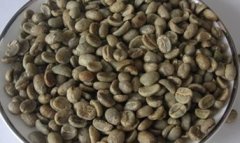Arabica and Robusta Coffee Beans
In terms of varieties, coffee trees are mainly divided into two types: one is Arabica, the other is Robusta.
Arabica
Robusta
Mostly found in tropical Central and South America
Of Madagascar in west-central and eastern Africa and Indonesia in Asia
Planted on an alpine slope at an altitude of 900 mi 2000 meters.
Planted on an alpine slope at an altitude of 200 Mel 600 meters above sea level
Need a high degree of manual intensive care
By contrast, it doesn't take much manpower.
The taste is rich.
The taste is poor and bitter.
Low caffeine content
The caffeine content is about twice that of Arabica.
The price is higher
The price is lower
The shape of the bean is small, the front is long oval, the middle crack is narrow and tortuous, and the arc on the back of the bean is smooth.
The bean shape is larger, the front is gradually round, and the back is round and straight, a bit like barley seed.
Since coffee fruits are not ripe on the same tree at the same time, high-quality coffee must be picked by hand. About 75 per cent of the world's coffee is Arabica, but only 10 per cent is coffee that can be used in high-end coffee shops. If coffee beans produced from one country or region have not been mixed with other coffee beans, we call them single-source coffee beans.
The types of Arabica coffee trees include: Bourbon,Typica,New modern nybrids caturra, Catimor and Variedad Colobiana.
Growing environment: coffee grows in a treeless climate with medium rainfall and plenty of sunshine. The main coffee growing regions in the world are the Americas, Africa, the Arab region and Indonesia. Coffee is grown in about 80 countries in these regions.
Important Notice :
前街咖啡 FrontStreet Coffee has moved to new addredd:
FrontStreet Coffee Address: 315,Donghua East Road,GuangZhou
Tel:020 38364473
- Prev

Basic knowledge of Fine Coffee several ingredients of coffee beans
Caffeine: caffeine is the most eye-catching of all the ingredients in coffee. It is a kind of phytoxanthin (animal muscle component). It has the same properties as theobromine contained in cocoa, green tea contains the same theophylline, and the percentage of reduction after baking is very small. Caffeine has a very wide range of effects. will affect the human brain, heart, blood vessels, gastrointestinal, muscle and kidney and other parts, the right amount of caffeine
- Next

General knowledge of boutique coffee diagrams of coffee beans from various countries
Brazilian coffee beans Colombian coffee beans blue mountain coffee beans Indonesia Manning coffee beans Vietnam coffee beans Java coffee beans
Related
- Beginners will see the "Coffee pull flower" guide!
- What is the difference between ice blog purified milk and ordinary milk coffee?
- Why is the Philippines the largest producer of crops in Liberia?
- For coffee extraction, should the fine powder be retained?
- How does extracted espresso fill pressed powder? How much strength does it take to press the powder?
- How to make jasmine cold extract coffee? Is the jasmine + latte good?
- Will this little toy really make the coffee taste better? How does Lily Drip affect coffee extraction?
- Will the action of slapping the filter cup also affect coffee extraction?
- What's the difference between powder-to-water ratio and powder-to-liquid ratio?
- What is the Ethiopian local species? What does it have to do with Heirloom native species?

